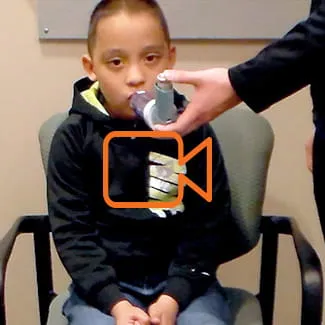January 31, 2020

The most common way to take asthma medicine is with an inhaler.
The medicine from an inhaler is sprayed out and needs to be breathed deep into the lungs. In order to get the medicine all the way into the lungs, you need to use a spacer.
If you don’t use a spacer, less than half of the medicine will make it into the lungs – most will stick in your mouth and throat.
The following is a step-by-step guide to using an inhaler with a spacer and mouthpiece.
Before taking your inhaler, always look at the counter on the back. This tells you if you still have medicine. If the counter is on zero, the inhaler does not have any medicine left, even if you see a mist come out. You need to get a new one as soon as possible.
Steps to Using an Asthma Inhaler With a Spacer and Mouthpiece
- Step 1: Stand or sit up straight.
- Step 2: Remove the protective dust cap that covers the mouthpiece.
- Step 3: Connect the inhaler to the spacer.
- Step 4: Shake the inhaler hard, at least five times. Make sure the inhaler stays straight up and down while you shake it.
- Step 5: Breathe out to the end of a normal breath. There is no need to push hard to get the air out of your lungs.
- Step 6: Put the end of the spacer in your mouth. The mouthpiece should be between your teeth and over your tongue. Seal your lips around the mouthpiece.
- Step 7: Hold the inhaler between your thumb and pointer finger. Push on the top of the inhaler to make it spray medicine.
- Step 8: Breathe in slowly and deeply over about five seconds. If you hear the spacer whistle, your breathing in was too fast.
- Step 9: Hold your breath for 10 seconds.
- Step 10: Take a break that is long enough for you to catch your breath again.
- Step 11: Shake the inhaler again before each puff if more than one puff is ordered.
Remember, if you have questions, call your doctor or asthma care team. Bring your inhaler and spacer to every visit for asthma so you can show us the technique you use.
The content in this article and accompanying video is not intended to be a substitute for professional medical advice, diagnosis, or treatment. Always seek the advice of your physician or other qualified health provider with any questions you may have regarding a medical condition. Never disregard professional medical advice or delay in seeking it because of something you read on DenverHealth.org.
If you think you may have a medical emergency, call your doctor, go to the emergency department, or call 911 immediately.

